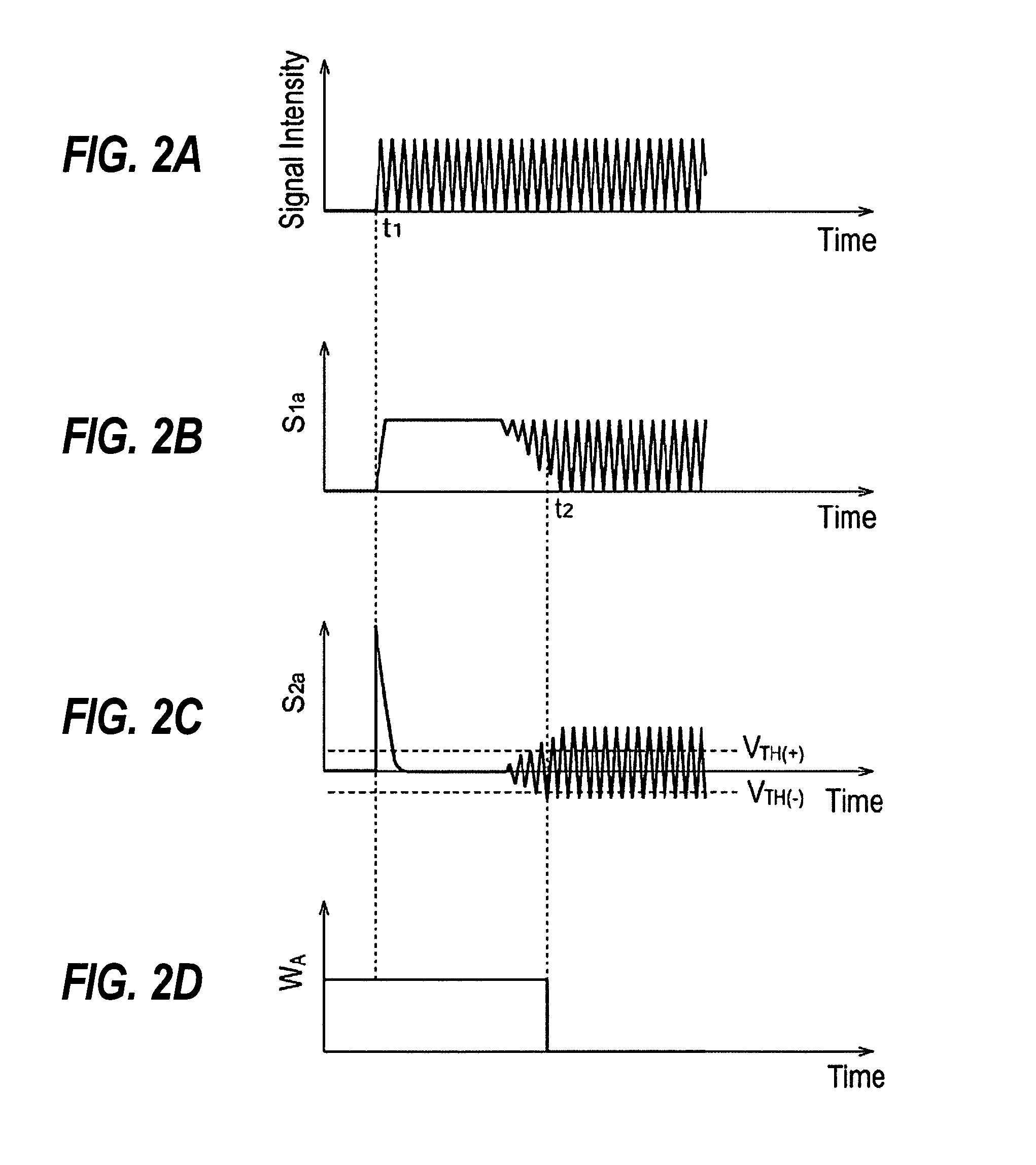Optical receiver reliably detectable loss-of-signal state
a technology of optical receiver and loss-of-signal state, which is applied in the field of optical receiver, can solve the problems that the conventional optical receiver does not provide a function to reliably detect the recovery of optical signals, and achieve the effects of reliably detecting the transition, reliably detecting the recovery of optical signals, and effectively detected
- Summary
- Abstract
- Description
- Claims
- Application Information
AI Technical Summary
Benefits of technology
Problems solved by technology
Method used
Image
Examples
Embodiment Construction
[0018]Next, preferred embodiments of the present invention will be described as referring to accompanying drawings. In the description, the same numerals or symbols will refer to the same elements without overlapping explanations.
[0019]FIG. 1 is circuit diagram of an optical receiver according to one embodiment of the present invention. The optical receiver 1 shown in FIG. 1 is an apparatus to convert an optical signal OIN input from an optical fiber into an electrical signal. The optical receiver 1 comprises a light-receiving device 2 such as a semiconductor photodiode, a pre-amplifier 3, coupling capacitors, 4a and 4b, a post-amplifier 5, and a LOSS-OF-SIGNAL (LOS) detector 6. The light-receiving device 2 generates, by receiving the optical signal OIN, a photo-current depending on the intensity of the optical signal. The pre-amplifier 3 converts the photo-current output from the light-receiving device 2 into a pair of signals, S1a and S1b, with normal and reverse phases, respectiv...
PUM
 Login to View More
Login to View More Abstract
Description
Claims
Application Information
 Login to View More
Login to View More - R&D
- Intellectual Property
- Life Sciences
- Materials
- Tech Scout
- Unparalleled Data Quality
- Higher Quality Content
- 60% Fewer Hallucinations
Browse by: Latest US Patents, China's latest patents, Technical Efficacy Thesaurus, Application Domain, Technology Topic, Popular Technical Reports.
© 2025 PatSnap. All rights reserved.Legal|Privacy policy|Modern Slavery Act Transparency Statement|Sitemap|About US| Contact US: help@patsnap.com



